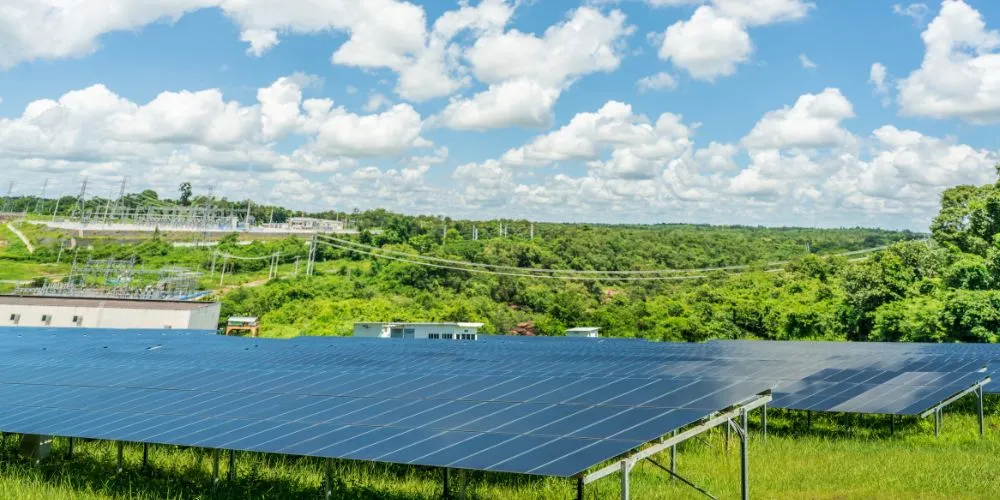In the quest for sustainable and renewable energy sources, photovoltaic (PV) technology has emerged as a shining star, transforming sunlight into electricity. This article explores the historical roots of photovoltaics, the science behind its operation, its applications across various sectors, and its pivotal role in the transition to a clean energy future.
Historical Roots of Photovoltaics
The journey of photovoltaic technology traces back to the 19th century when scientists first discovered the photovoltaic effect. The French physicist Alexandre-Edmond Becquerel observed that certain materials generate an electric current when exposed to sunlight. This discovery laid the foundation for the development of solar cells.
Early Solar Cells – From Discovery to Innovation
In the early 20th century, we witnessed notable advancements in photovoltaic technology. 1954, Bell Labs introduced the first practical solar cell using silicon, marking a significant milestone. From powering satellites to exploring remote locations on Earth, solar cells gradually found practical applications.
Growth in Space Exploration – Solar Cells Beyond Earth
The space race of the mid-20th century spurred further developments in photovoltaics. Solar cells became integral to space missions, providing a reliable and sustainable power source for satellites and spacecraft. This era of space exploration accelerated the technological evolution of photovoltaic technology.
The Science of Photovoltaics
At the core of photovoltaic technology lies the capability of certain materials to convert sunlight into electricity through the photovoltaic effect. Understanding the science behind this process is crucial to unlocking the full potential of solar energy.
Photovoltaic Cells – Harnessing Solar Power
Photovoltaic cells, commonly called solar cells, are made of semiconductor materials, often silicon. When sunlight strikes the semiconductor, it excites electrons, generating an electric current. This direct conversion of sunlight into electricity forms the basis of photovoltaic power generation.
Solar Panels – Aggregating Power Production
Solar cells are assembled into solar panels, which, when connected, create a solar array. These arrays can range from small rooftop installations to large solar farms. A photovoltaic system’s efficiency and power output depend on factors such as the quality of solar cells, sunlight intensity, and system design.
Applications Across Various Sectors
Photovoltaic technology has transcended its origins in space exploration to become a versatile and widely adopted source of electricity. Its applications span residential, commercial, industrial, and even off-grid scenarios.
Residential Solar PV – Empowering Homes
One of the most common applications of photovoltaic technology is in residential solar installations. Rooftop solar panels allow homeowners to generate their electricity, reducing reliance on the grid and contributing to lower energy bills. Government incentives and falling costs have fueled the growth of residential solar adoption.
Commercial and Industrial Solar – Scaling Up Power Generation
Photovoltaic systems are increasingly powering commercial and industrial facilities. Large solar arrays on rooftops or ground-mounted installations contribute to businesses’ sustainability goals, offering a clean and reliable source of electricity. The commercial sector’s adoption of solar power reflects a commitment to environmental responsibility and cost-effective energy solutions.
Utility-Scale Solar Farms – Contributing to the Grid
Utility-scale solar farms significantly contribute to the global transition to renewable energy. These large installations, often covering vast areas, generate electricity on a massive scale. Solar farms feed energy into the grid, providing clean power to communities and supporting efforts to reduce reliance on fossil fuels.
Off-Grid and Remote Applications – Bringing Light to Untouched Areas
Photovoltaic technology is crucial in bringing electricity to remote and off-grid areas. Solar-powered systems, such as solar water pumps, lighting, and microgrids, empower communities that lack access to conventional power sources. These applications contribute to improving living conditions and fostering sustainable development.
Advancements and Innovations in Photovoltaics
The field of photovoltaics continues to evolve, driven by ongoing research and technological advancements. Innovations aim to enhance efficiency, reduce costs, and expand the potential applications of solar energy.
Thin-Film Solar Cells – Flexible and Lightweight Solutions
Thin-film solar cells represent a notable innovation in photovoltaics. These cells use thin layers of semiconductor material, offering flexibility and lightweight properties. Thin-film technology enables solar integration into unconventional surfaces and opens new possibilities for solar-powered devices.
Tandem Solar Cells – Maximizing Efficiency
Tandem solar cells involve stacking multiple layers of solar cell materials to capture a broader spectrum of sunlight. This technology increases the overall efficiency of solar cells, pushing the boundaries of what is achievable in converting sunlight into electricity.
Perovskite Solar Cells – Emerging Star in Photovoltaics
Perovskite solar cells have garnered attention as a promising alternative to traditional silicon-based cells. These cells use perovskite-structured materials, offering the potential for lower production costs and higher efficiency. Ongoing research aims to overcome challenges and bring perovskite solar cells to commercial viability.
Challenges and Opportunities in Photovoltaics
Despite the remarkable progress in photovoltaic technology, challenges persist. Overcoming these challenges is important to unlocking the full poss of solar energy and realizing a sustainable and clean energy future.
Energy Storage – Addressing Intermittency
The intermittent nature of sunlight poses a challenge for photovoltaic systems. For example, advanced batteries and energy storage technologies are crucial for storing excess energy during peak sunlight hours and releasing it when it is unavailable. Continuous advancements in energy storage contribute to overcoming the intermittency challenge.
Material Availability and Recycling – Sustainable Lifecycle
The production of solar panels involves utilizing various materials, including rare elements. Ensuring the sustainable sourcing of these materials and developing effective recycling methods are essential for minimizing the environmental impact of photovoltaic technology throughout its lifecycle.
Grid Integration – Adapting to Distributed Energy
Integrating solar power into existing energy grids requires adaptations to accommodate distributed energy sources. Smart grid technologies, energy management systems, and infrastructure upgrades are essential to a seamless transition to a more decentralized and renewable energy grid.
Future Perspectives and Global Collaboration
The future of photovoltaics holds immense promise as the world seeks cleaner and more sustainable energy solutions. Continued advancements, policy support, and global collaboration will shape the trajectory of photovoltaic technology in the coming decades.
Cost Reduction – Making Solar Power Accessible
Ongoing efforts to reduce the cost of photovoltaic systems are critical for making solar power accessible to a broader population. Government incentives, research initiatives, and economies of scale contribute to the continual decrease in the cost of solar energy, making it increasingly competitive with conventional sources.
Policy Support – Fostering a Solar-Friendly Environment
Government policies play a pivotal role in driving the adoption of solar energy. Incentives, subsidies, and regulations that promote clean energy adoption create a supportive environment for businesses and individuals to invest in photovoltaic technology.
Global Collaboration – Addressing Energy Challenges
The transition to a sustainable energy future needs global collaboration. Knowledge sharing, joint research initiatives, and international agreements are essential for accelerating the adoption of photovoltaic technology and addressing shared energy challenges on a planetary scale.
Conclusion
Photovoltaic technology has evolved from a scientific curiosity to a cornerstone of the global transition to clean and sustainable energy. Photovoltaics has become integral to the energy landscape, from powering spacecraft to illuminating homes and businesses. As technology advances, costs decrease, and global collaboration intensifies, photovoltaic power will play a central role in realizing a future powered by clean, abundant, and renewable energy sources.












